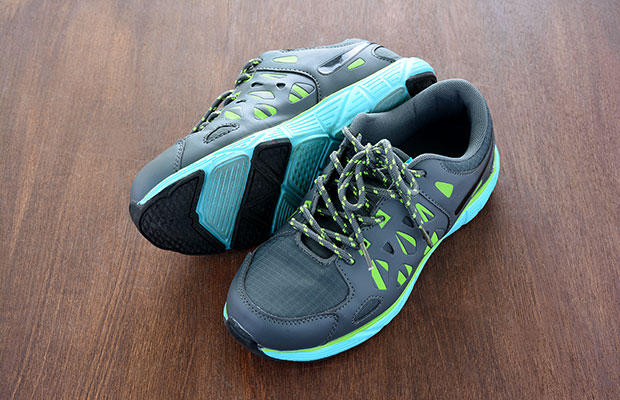How to fix it: Add variety to your walks. It could be as simple as choosing a new route or terrain or using a weighted vest or walking poles. After 3 months, introduce another new challenge to your body, Gibson says.
2) The problem: Walking at only one pace
Why it's a weight loss killer: Walking at the same pace every time out will burn fat, but eventually your body will adjust (see above), and your fat loss will taper off, says Michael Morelli, founder of Morellifit in Scottsdale, AZ, and creator of HIIT Max. (That's why high intensity interval training is so important.)
How to fix it: Get off that weight loss plateau by using the rule of three when it comes to setting your pace: a stroll, a moderate pace (where you feel more pick-up in your step), and a vigorous stride (so you're breaking into a heavy sweat). Shoot to do at least one of each—especially the vigorous walk—a week, Morelli says. Even better, mix all three into the same walk: Stroll for 2 minutes, go at a moderate pace for a minute, then stride vigorously for 30 seconds. Repeat the pattern for 20 to 30 minutes.
3) The problem: Having a weak core
Why it's a weight loss killer: Strong abs aren't just about vanity. A soft midsection can make it hard to walk faster: "Weak abs can cause poor posture, which rounds the shoulders and compresses the lungs," says Kristin McGee, New York City–based yoga and Pilates expert and AcaciaTV instructor. That will make it tough to breathe deeply and can even strain valuable walking muscles like the hip flexors and hamstrings. Not only will you tire faster, but you also risk injury.
How to fix it: Although you can—and should—work on strengthening that core with specific exercises (like these four core moves), you can also think about balancing a book on your head as you walk and focus on keeping your core engaged.
4) The problem: Not tracking your eating
 Photograph by Kikovic/Getty Images
Photograph by Kikovic/Getty Images
Why it's a weight loss killer: People often eat more than they burn with walking, and if you're not aware that you're doing this, you won't lose weight. "You can't out-walk a poor diet," says Jessica Smith, a certified trainer in Miami and creator of the Walk STRONG: 6 Week Total Transformation System.
How to fix it: Try writing down everything you eat and drink for a few days, or use a tracking app like MyFitnessPal. If you need to cut back, load your diet with high-fiber fruits and veggies, Smith adds.
5) The problem: Taking strides that are too long
Why it's a weight loss killer: Big strides will kill your speed, and without speed, you won't burn as many calories, McGee says.
How to fix it: Check that you're using the right stride length by lifting a foot and leaning slightly forward as you see where that foot naturally falls. Try it with the other foot and keep repeating these steps until this stride length feels natural.
6) The problem: Wearing old or the wrong shoes
 Photograph by Namepic/Getty Images
Photograph by Namepic/Getty Images
Why it's a weight loss killer: You won't be able to walk very far or fast if you're in pain. "You could easily get shin splints, plantar fasciitis, tight hips, or lower back pain, which could take you completely out of the game," says Jenny Schatzle, a fitness trainer in Santa Barbara, CA, and creator of the Jenny Schatzle program.
How to fix it: Find a walking store where you can get expert advice about the best shoe for your feet (or try this easy foot test to see what foot type you have). Scott Danberg, MS, director of fitness at Pritikin Longevity Center in Miami has some guidance: Find a shoe that gives you a thumb's width between your longest toe and front inside edge of the shoe; a firm heel cup; at least one-quarter to one-inch sole cushion; and lateral support. Then make sure you switch those shoes every 3 to 5 months, Schatzle says.
7) The problem: Not logging your fitness progress
Why it's a weight loss killer: If you're not keeping tabs on how your fitness is improving, it'll be tougher to know when you need to change things up, Morelli says.
How to fix it: Keep a walking journal that notes time, pace, and distance. Each week, try to improve one of those variables. For instance, add a few more minutes to your walks or try to beat your time from a walk last week.




